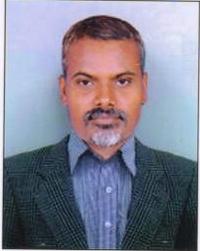
T Benarji Patrudu
GITAM University, India
Title: Physico-Chemical nurture of soil texture procedure for identification of Indian tropical Soils
Biography
Biography: T Benarji Patrudu
Abstract
A simple, accurate and convenient analytical method has been developed for the determination of different soil samples. Soils were collected from different locations like Rudraram, Koulampet, Cheriyal, Lakdaram and Pashamylaram belonging to Medak district, Telangana, India. Soil samples were taken from a depth below the surface 20 cm. The selected sampling sites were not treated with crop protection products formative last two years and no organic fertilizers applied from last two years. Soils dried for about half an hour at room temperature before determination of all physico-chemical parameters. Air dried soil samples were sieved through a 2 mm sieve and used for determination of pH, bulk density and soil texture. To a 1 liter beaker, 20 g of air dried soil sample was transferred and 50 ml of 30% w/v H2O2 was added and mixed well. The reaction was allowed to proceed for 5 minutes and then it was placed in a hot water bath at 70 oC for about 20 minutes. The beaker was covered with a watch glass. Stirring was continued to avoid frothing over. Further 20 ml of H2O2 was added and was placed in the water bath at 70 oC for about 20 minutes. The contents were diluted to about 150 ml of distilled water and were brought to boil on a water bath at 70 °C. H2O2 treatment is to oxidize the organic matter in the soil, estimation of clay, silt and sand. Based on the characterization, the soils were distinguished into loamy sand, sandy loam, clay and sandy clay. The details of collection location and type of soils as follows: (1) Rudraram-contains loamy sand soil, (2) Koulampet-contains loamy sand soil, (3) Cheriyal-contains sandy loam soil, (4) Lakdaram-contains sandy clay soil and (5) Pashamylaram-contains clay soil.

